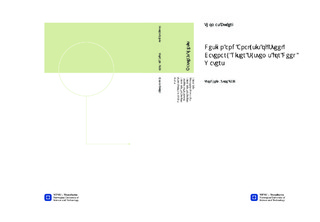| dc.contributor.advisor | Leira, Bernt Johan | nb_NO |
| dc.contributor.author | Buberg, Thomas | nb_NO |
| dc.date.accessioned | 2014-12-19T12:11:05Z | |
| dc.date.available | 2014-12-19T12:11:05Z | |
| dc.date.created | 2014-07-08 | nb_NO |
| dc.date.issued | 2014 | nb_NO |
| dc.identifier | 733304 | nb_NO |
| dc.identifier | ntnudaim:11460 | nb_NO |
| dc.identifier.uri | http://hdl.handle.net/11250/238824 | |
| dc.description.abstract | The global growing demand of energy leads the oil and gas industry into deeper waters and harsher environments as current fields are being depleted. This results in need for more advanced technologies to ensure that the systems are able to cope with the increased environmental loads and vessel motions.Steel catenary risers (SCRs) has emerged as a preferred solution for use in deepwater fields because of its simplicity in terms of engineering and fabrication in addition to its cost efficiency and flexibility in choice of host platform. However, the SCRs face challenges concerning large motions from the host platform and excessive bending moment at the touchdown point (TDP). The first part of this thesis assesses different types of marine riser systems in terms of geometric shapes, and discusses various types of relevant materials for these systems. Furthermore, a more in-depth description of SCR system is given.The second part concentrates on the loads acting on the system and what software is used to analyze the SCR configurations.The third part of the thesis performs analysis on how a conventional 12-inch SCR responds to environmental loading at extreme North Sea values. The study shows that the conventional SCR is not suitable for the environments, and therefore an optimized SCR configuration is identified based on varying coating-weight along the riser. Analysis is performed on the weight-distributed SCR configuration, and the two configurations are compared to each other.The last part of the thesis consists of a sensitivity study on the weight-distributed SCR in terms of how different coating densities affect the system. In addition, a sensitivity study is performed on how the number of elements used in the analysis affects the system.The study concludes by the comparison of the two configurations that the weight-distributed SCR configuration has remarkable improvement in response values compared to the conventional SCR configuration in all areas analyzed, and that even with deep waters and harsh environments, suitable solutions are possible to achieve. | nb_NO |
| dc.language | eng | nb_NO |
| dc.publisher | Institutt for marin teknikk | nb_NO |
| dc.title | Design and Analysis of Steel Catenary Riser Systems for Deep Waters | nb_NO |
| dc.type | Master thesis | nb_NO |
| dc.source.pagenumber | 126 | nb_NO |
| dc.contributor.department | Norges teknisk-naturvitenskapelige universitet, Fakultet for ingeniørvitenskap og teknologi, Institutt for marin teknikk | nb_NO |

